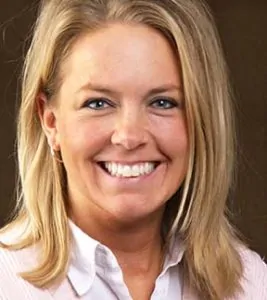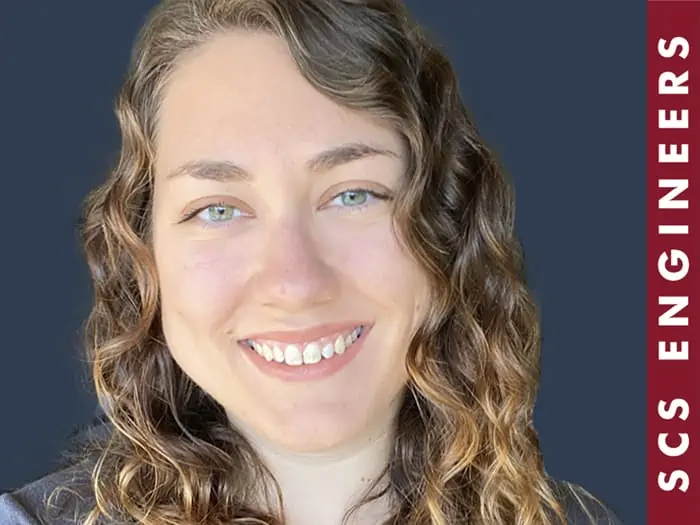

Capturing carbon dioxide and injecting it into a Class VI well for permanent geologic carbon sequestration, or CO2 storage, is a practice that industry leaders use to decarbonize manufacturing processes. Manufacturers use CO2 storage to reduce their greenhouse gas emissions and carbon footprint. There has been an uptick in proposed projects, both commercial hub-scale and single emitter-affiliated scale, particularly within the last year. The catalyst for the uptick in proposed projects is primarily the associated financial incentives, including federal tax credits and grant monies.
In this educational webinar, Professional Geologist Kacey Garber describes what manufacturers interested in geologic CO2 storage can expect the project landscape to look like in 2024. The video includes a discussion of the following:
Understanding the current project landscape and how and when future project opportunities might evolve is important for manufacturers considering the geologic storage of their CO2 stream, whether through a larger commercial hub or a smaller on-site project.
Additional Resources:
About the Presenter: Kacey Garber is a professional geologist experienced as a groundwater project manager for active and closed industrial client sites. Her responsibilities include groundwater monitoring and statistical analyses; reports and permit applications; designing sampling and analysis plans; special groundwater studies; and conducting groundwater well construction planning and design. She has also been involved in PFAS work groups and publishes on the topics of UIC and geologic carbon sequestration.
Join SCS Engineers professionals at the Recycling Association of Minnesota/SWANA Annual Conference, April 2-3 at the Mystic Lake Center in Prior Lake, MN.
The RAM/SWANA Conference & Show is the premier recycling and waste management conference in the Upper Midwest. This is a great opportunity for professional development, networking and on-site tours.
Join SCS Engineers professionals, at Wisconsin’s Safety Council’s Annual Conference, April 15-17 at the Kalahari Resort in Wisconsin Dells.
Wisconsin’s Safety Council’s Annual Conference is Wisconsin’s premier event highlighting health, safety and human resource best practices challenges and solutions. The conference features 50+ educational sessions, 200 exhibitors and 5 pre-conference professional development courses. In its 82nd year, the conference provides a unique opportunity for professionals to share resources and experiences with colleagues, and to discuss views and concerns with a wide range of stakeholders. You can expect to hear from the same top-notch speakers and attend sessions with the latest safety information.
Click for more details and registration information
Join SCS Engineers professionals, including our National Landfill Expert, Betsy Powers, for the Solid Waste Landfill Design Course, April 1-3 at the Pyle Center in Madison, WI.
During the course you will have the opportunity to learn about the critical factors of solid waste landfill design, operations, evolving industry issues, and economics. Learn from expert and diverse course faculty (top-flight researchers, owners at the cutting edge of evolving practice, industry experts). Get a firm grasp of the background and design specifics to compete in this industry, including industry-leading information on the principles and practices of solid waste landfill development, design, construction, operations, and management. Understand practical emerging technologies including:

This course will guide you through the development process of a successful solid waste landfill, from cradle to grave. Industry experts will share critical factors and insights. Interactive discussion and idea exchange will be emphasized. Click to learn more and enroll today.
Meet SCS Engineers professionals at the Iowa Society of Solid Waste Operations (ISOSWO)’s Spring Conference, March 14 – 15, at the Rock Island Inn & Suites in Marshalltown, Iowa.
The conference will feature networking opportunities, tours, exhibits, and educational sessions.
Click for more details and registration information

Kacey Garber, PG, is presenting on Wednesday, February 28th (8:30 am – 9:00 am, Plaza).
Kacey will answer the question, How Might Co-Mingling UIC Waste Plumes Affect Class I UIC Operations and the Area of Review?
Class I UIC wells may be utilized to dispose of fluid wastes within deep geologic units, such as depleted hydrocarbon reservoirs or saline aquifers. Class I UIC wells may be located in the vicinity of other injection wells associated with disposal and/or hydrocarbon production. Injecting fluids leads to mixing with and displacement of native fluids within the reservoir. Because water is relatively incompressible, the mixing and displacement of fluids lead to a buildup of pressure within the reservoir. The magnitude of this pressure buildup is dependent on several factors, including the porosity and permeability of the reservoir, the density and viscosity of both the previous and present-day injectate and native fluids, and the thickness and lateral extent of the reservoir.
Elevated reservoir pressures resulting from injection can allow fluids to migrate upwards through open or improperly plugged artificial penetrations and/or fractures of the reservoir or confining zones, either of which would endanger overlying aquifers. As a result, agencies require Class I UIC permit applications to include calculations or modeling to assess what pressure thresholds would lead to aquifer endangerment. Many of these calculations do not allow realistic predictions of pressure buildup or plume extent in situations where co-mingling of waste plumes may occur. In this presentation, we assess the utility of computational flow modeling for complex injection scenarios where the co-mingling of waste plumes from neighboring operations might influence pressure buildup and overall plume extent.
Kacey Garber is an experienced groundwater project manager for active and closed industrial clients, including routine groundwater monitoring and statistical analyses; reports and permit applications; designing sampling and analysis plans; special groundwater studies; and conducting groundwater well construction planning and design. She has also been involved in PFAS work groups and publishes on the topics of UIC and geologic sequestration. Ms. Garber has a Masters degree in Geoscience.
Additional Resources:
SCS Engineers is participating in the Georgia Tech ASCE/AEES 2024 Spring Civil and Environmental Engineering Career Fair on Thursday, February 1st, 2024.
Each year, Georgia Tech American Society of Civil Engineers (ASCE) and Association of Environmental Engineers and Scientists (AEES) co-host the Spring Civil and Environmental Engineering (CEE) Career Fair. This event is a great opportunity for all students and alumni to connect with a diverse array of employers, from corporations to nonprofits, for internships, part-time, and full-time positions. For company representatives who will be attending the career fair, this link contains valuable logistical information like times, parking, and table space details.
SCS is an employee-owned, award-winning environmental engineering, consulting, and construction firm with offices nationwide. We are seeking a wide variety of dedicated, hard-working professionals with Science, Technology, Engineering, and Mathematics (STEM) backgrounds.
Hear from SCS Engineers experts at the SWANA Western Regional Symposium on May 20 – 23, at the Palm Springs Hilton Resort in Palm Springs, CA . SCS is also is a sponsor of the symposium.
The symposium is the premier professional meeting for solid waste, recycling, composting, and organics management professionals. The program is slated to cover dozens of topics ranging from Circular Economy, ZeroWaste, Recycling Markets, Organics Policies and Programs, Infrastructure, SB 1383, Advanced Technology, Facilities (Landfills, Transfer Stations, Processing Facilities) and more. Attendees will have the opportunity to learn, connect and engage within the industry.
Numerous SCS Engineers experts will be on hand to discuss your solid waste management challenges, and several are presenting at the symposium, including:
The U.S. Environmental Protection Agency announces it is lowering recommended screening levels and strengthening guidance for investigating and cleaning up lead-contaminated soil in residential areas. This is the second time that EPA has reduced the screening value for lead in soil at residential properties. The original screening level range of 500 to 1,000 parts per million (ppm) was established in 1989. The original screening value was reduced to 400 ppm in 1994.
As a result of lower screening levels, EPA expects to investigate more residential properties for potential cleanup under the Superfund law and the Resource Conservation and Recovery Act. Today’s action delivers on the Biden-Harris Administration’s ongoing commitment to protect communities from lead poisoning, particularly in disadvantaged and overburdened communities facing multiple sources of lead exposure, advancing President Biden’s environmental justice goals.
EPA is lowering the screening level for lead in soil at residential properties from 400 ppm to 200 ppm. At residential properties with multiple sources of lead exposure, EPA will generally use 100 ppm as the screening level. Screening levels are not cleanup standards. EPA aims to help site teams make site-specific cleanup decisions to protect nearby communities; EPA makes cleanup decisions specific to each site, using site-specific factors, including risk factors and community input that can vary from site to site.
While the guidance goes into effect immediately, EPA welcomes feedback from the public for any future updates to the guidance. Please submit written feedback on the guidance in the public docket (Docket ID: EPA-HQ-OLEM-2023-0664) for 60 days, from January 17, 2024, to March 17, 2024.
For more information or implications for a site, visit the updated guidance webpage, or contact an SCS environmental professional in your state.
Join SCS Engineers at Green Technology’s Sustainable Facilities Forum on May 9 at the Scottish Rite Masonic Center in Sacramento, CA.
The conference will highlight strategies, best practices and technologies behind successful public sector facility projects. The event includes access to education sessions, live keynote, annual leadership awards presentations and to the sustainable products and services displays.
The concurrent sessions offer insights from the experts and practitioners at the leading edge of green progress, in fields ranging from transportation and energy to funding, architecture and green schools. Stroll through the exhibit space and discover dozens of green products and services all in one place. Find out what’s new and get an intensive, hands-on education that’s not available anywhere else!
The Forum is designed for public and private sector professionals engaged in facility project design, decarbonization, water conservation, electric vehicle and electric vehicle infrastructure.
Check the conference site for more details and information.